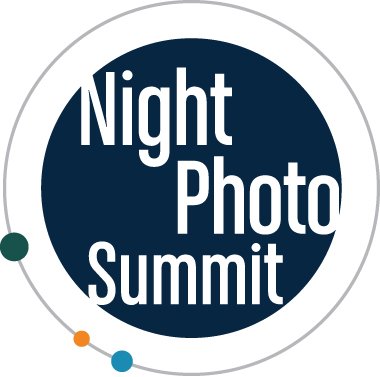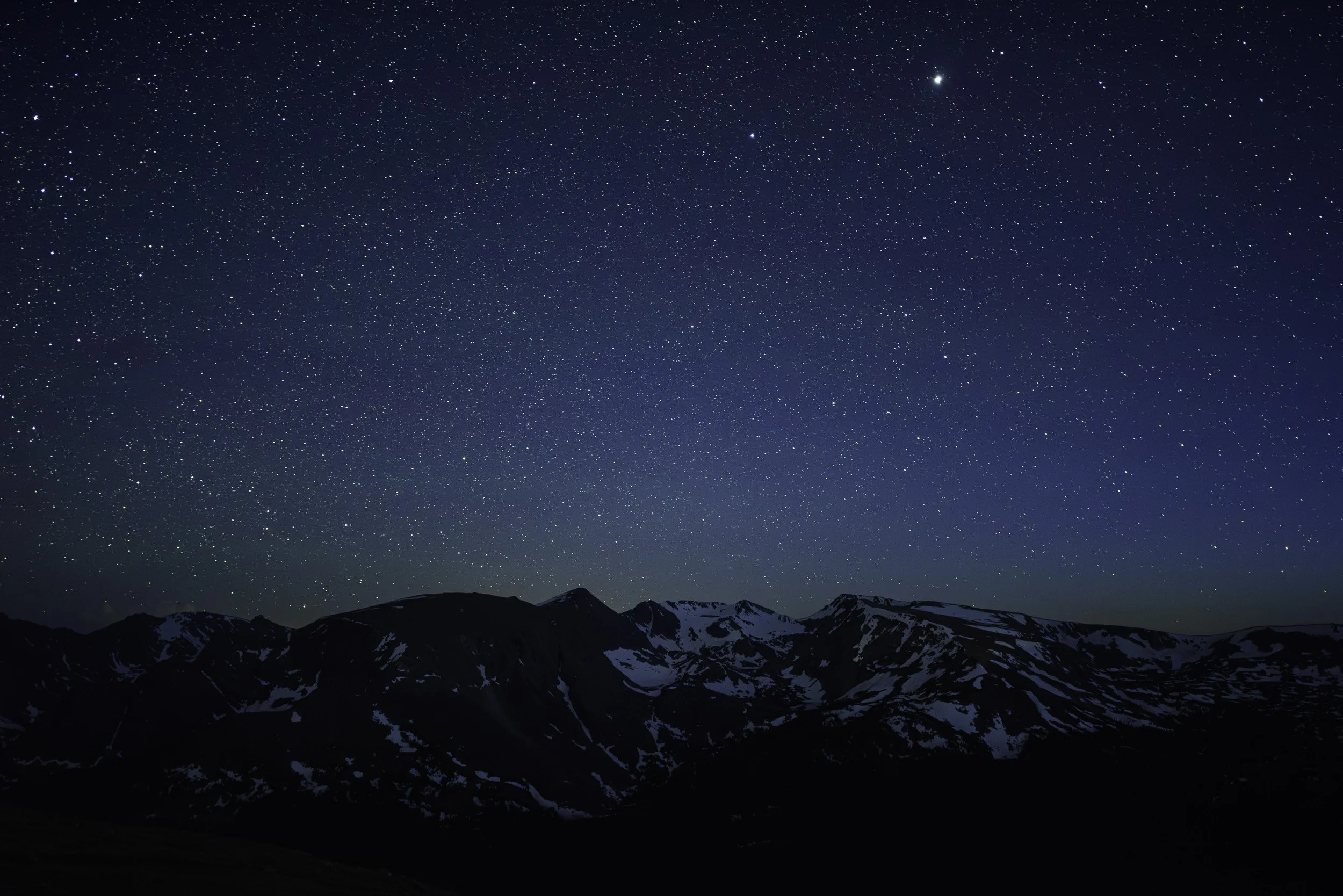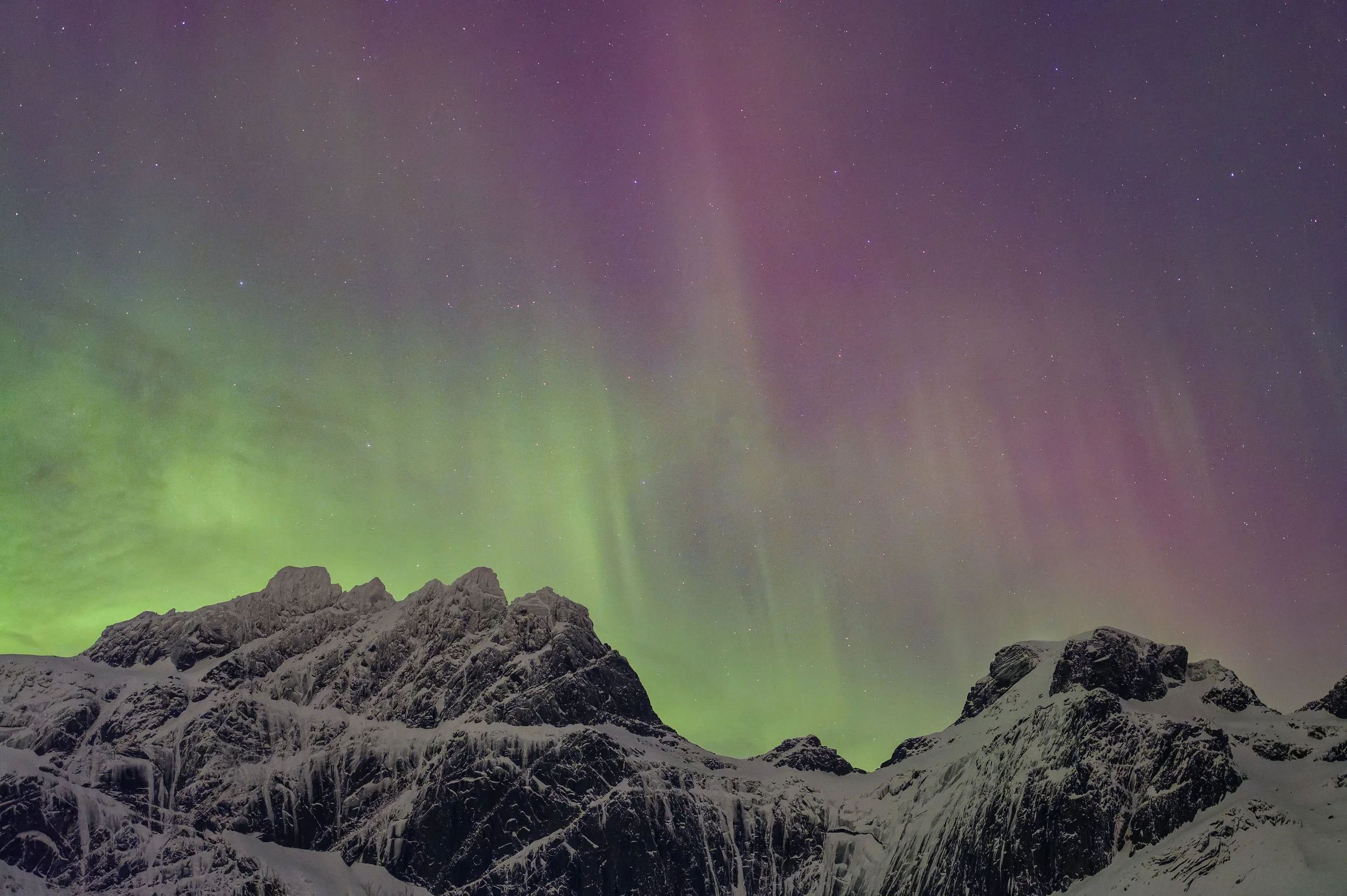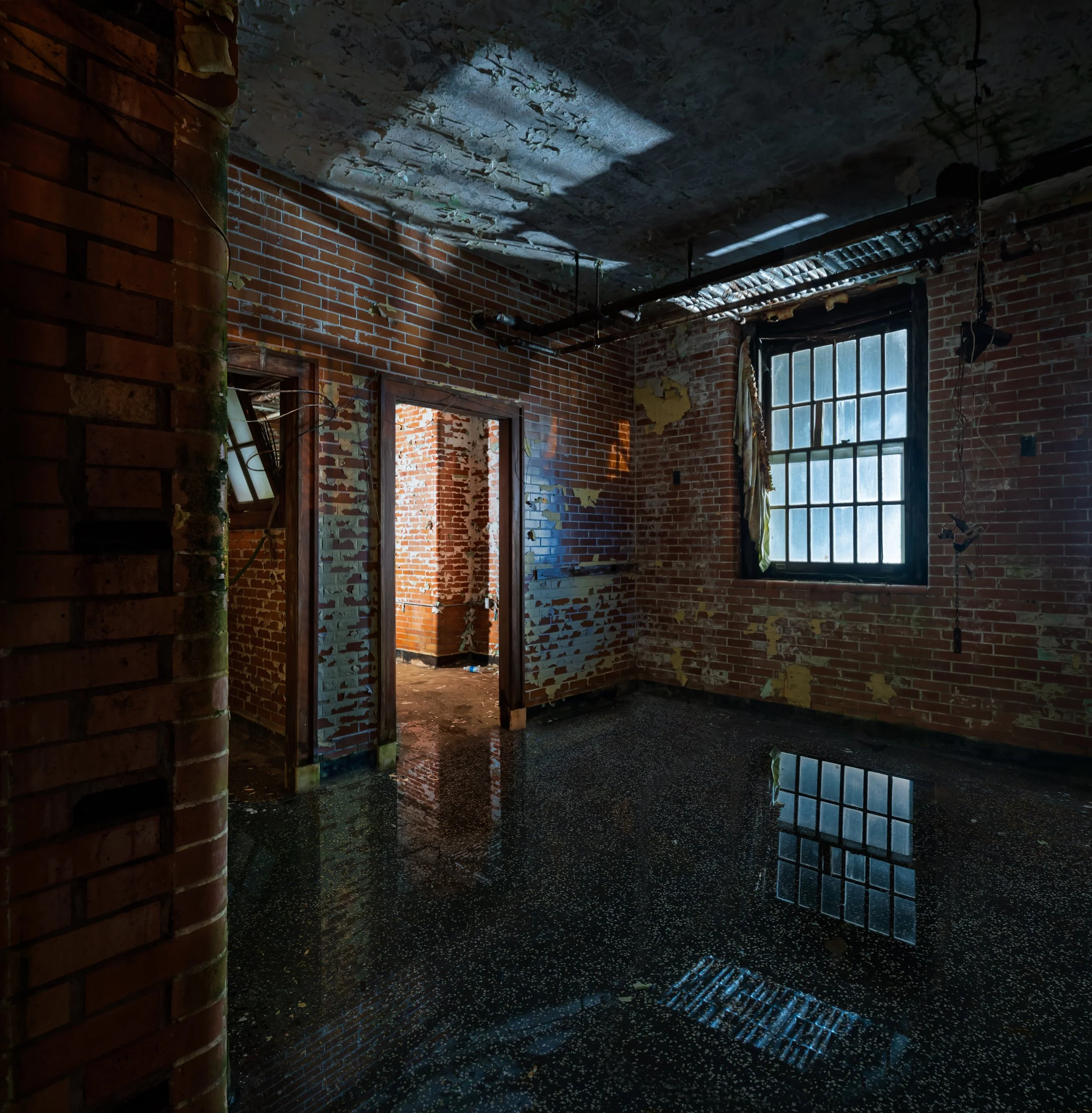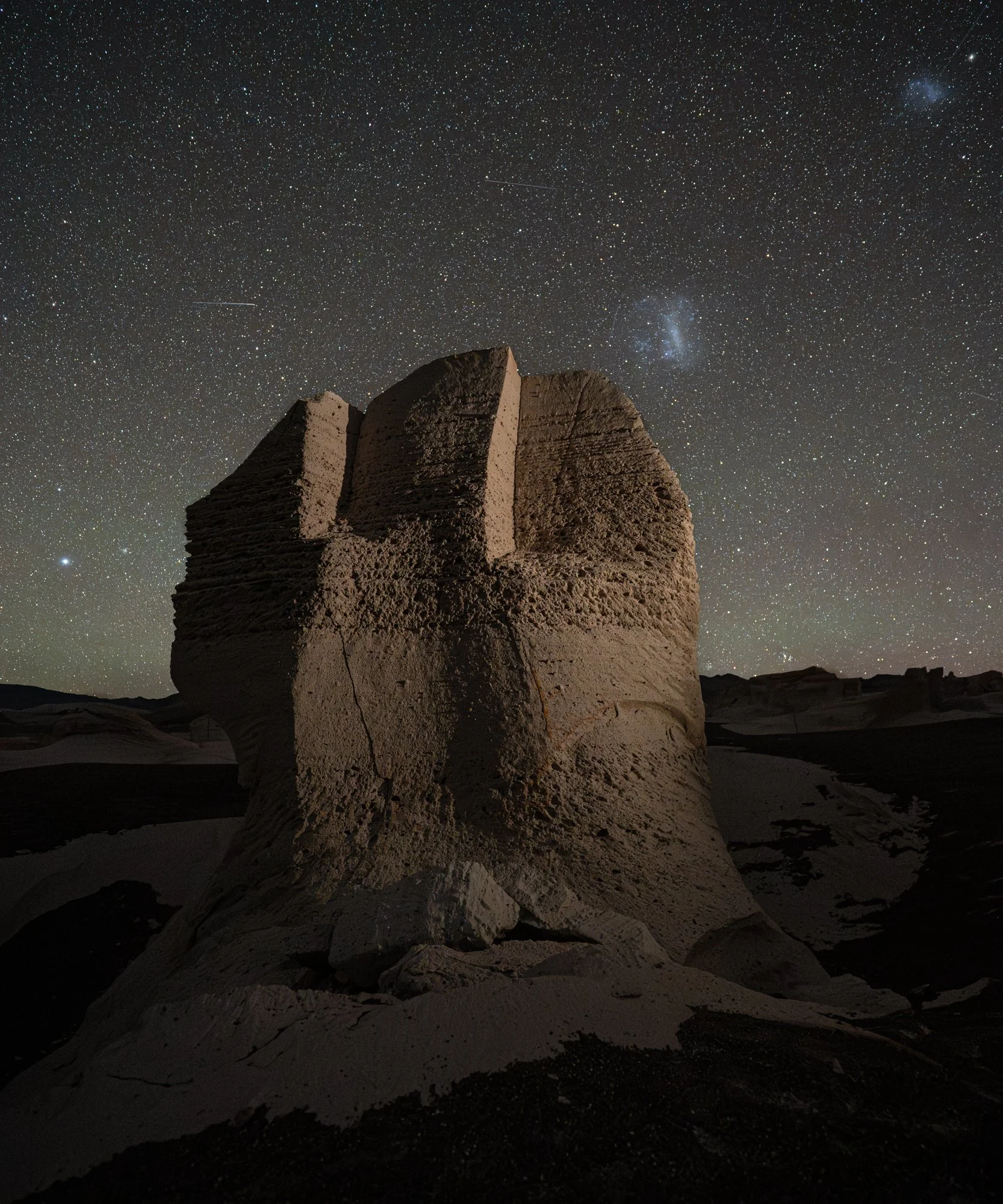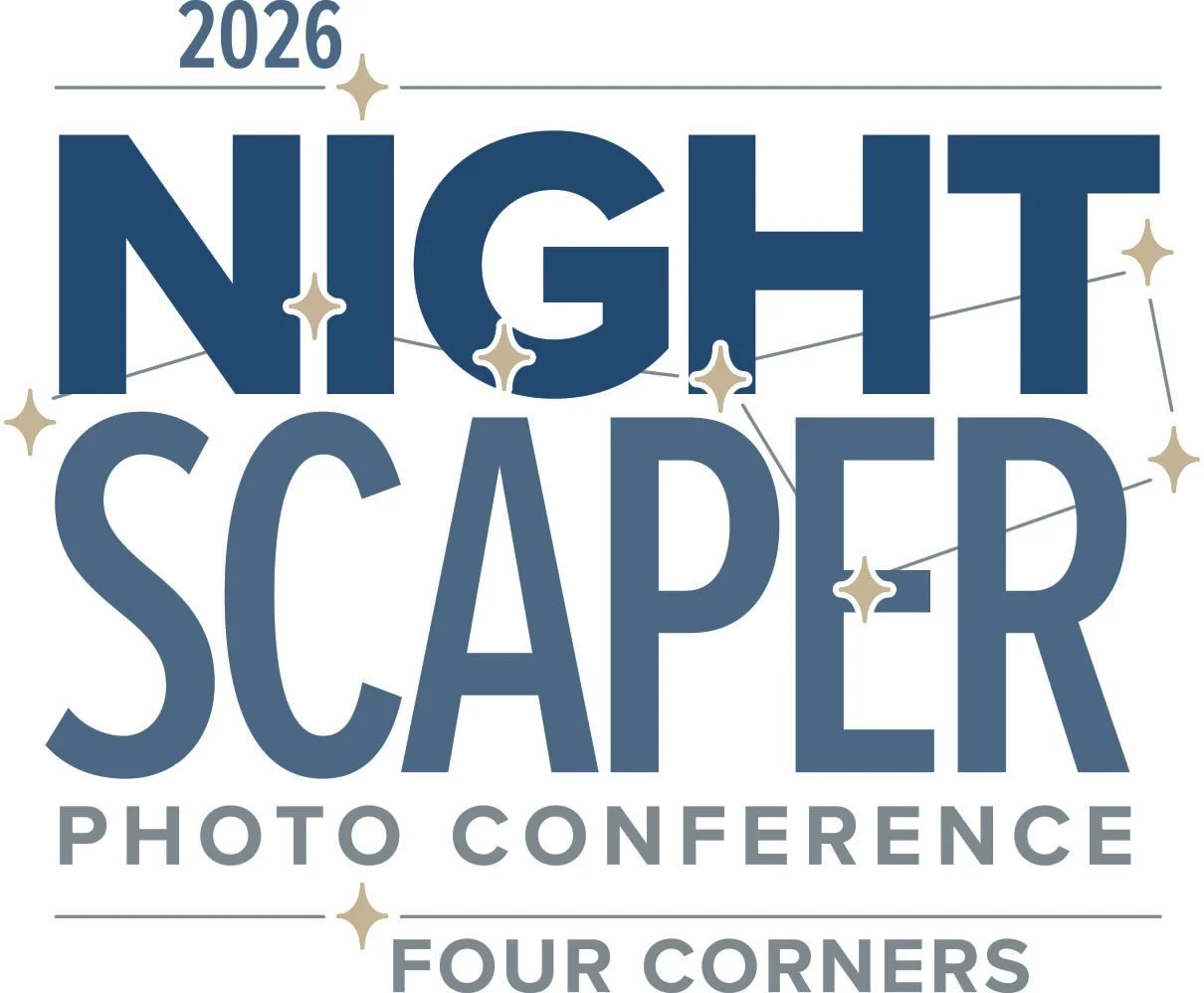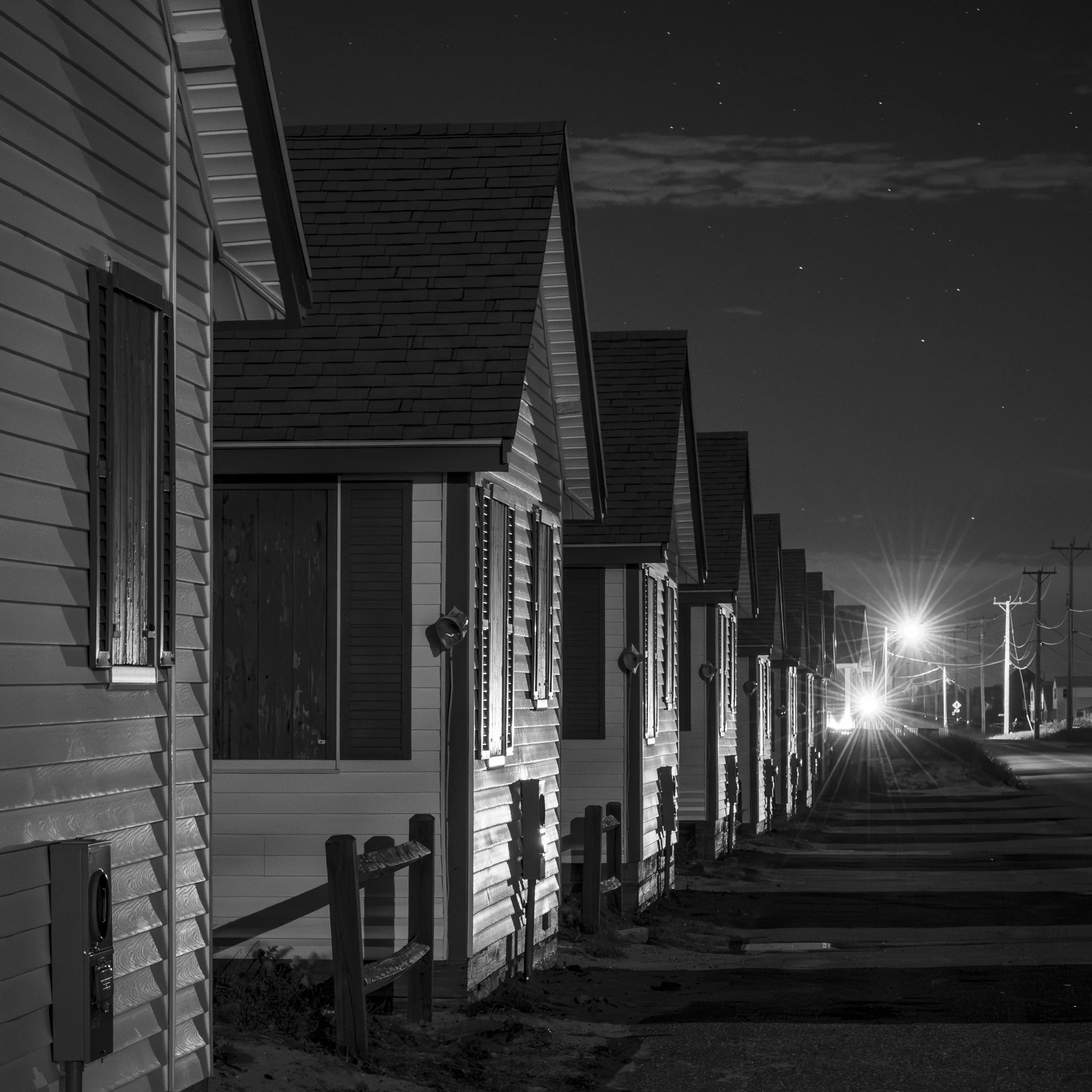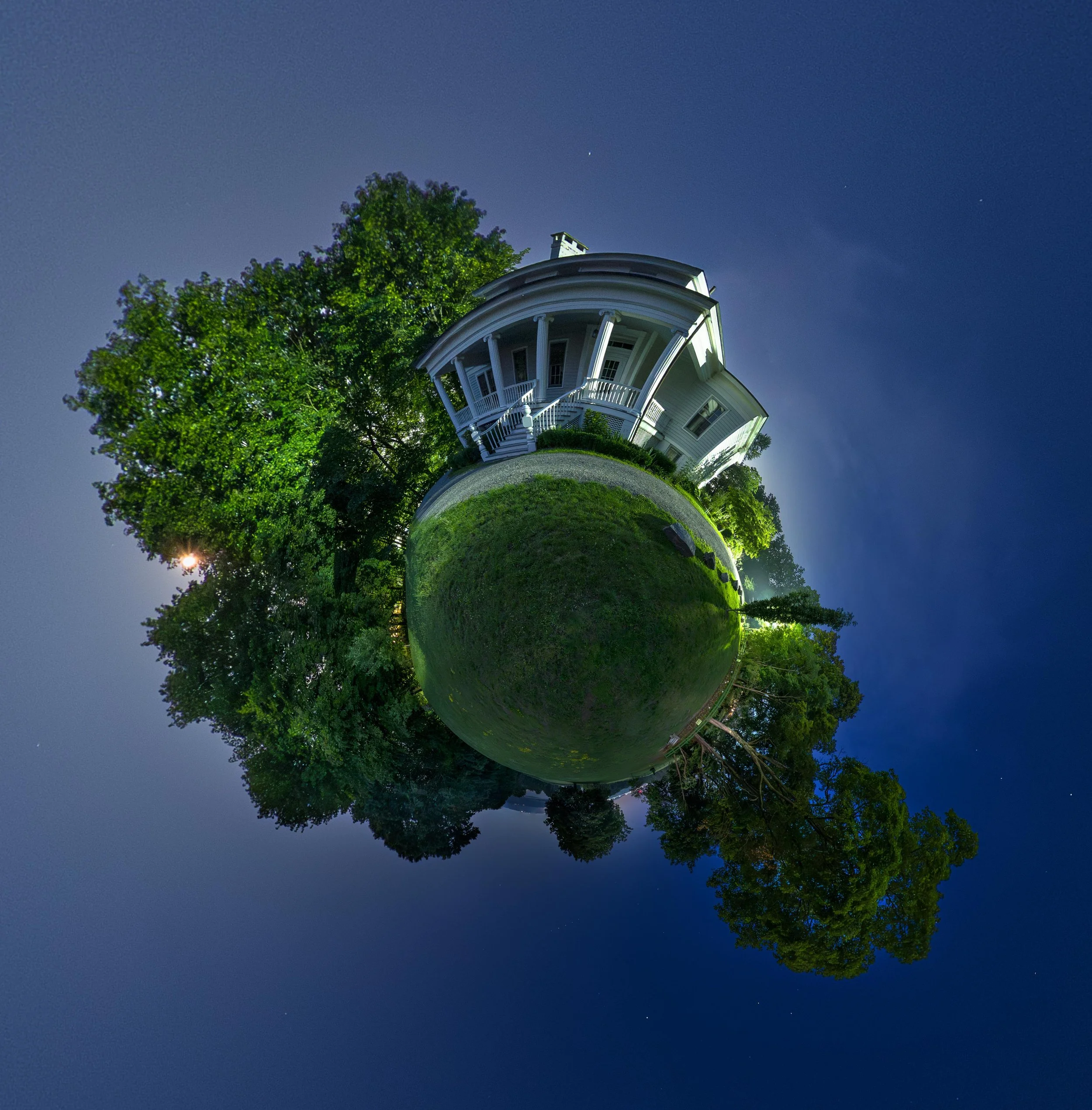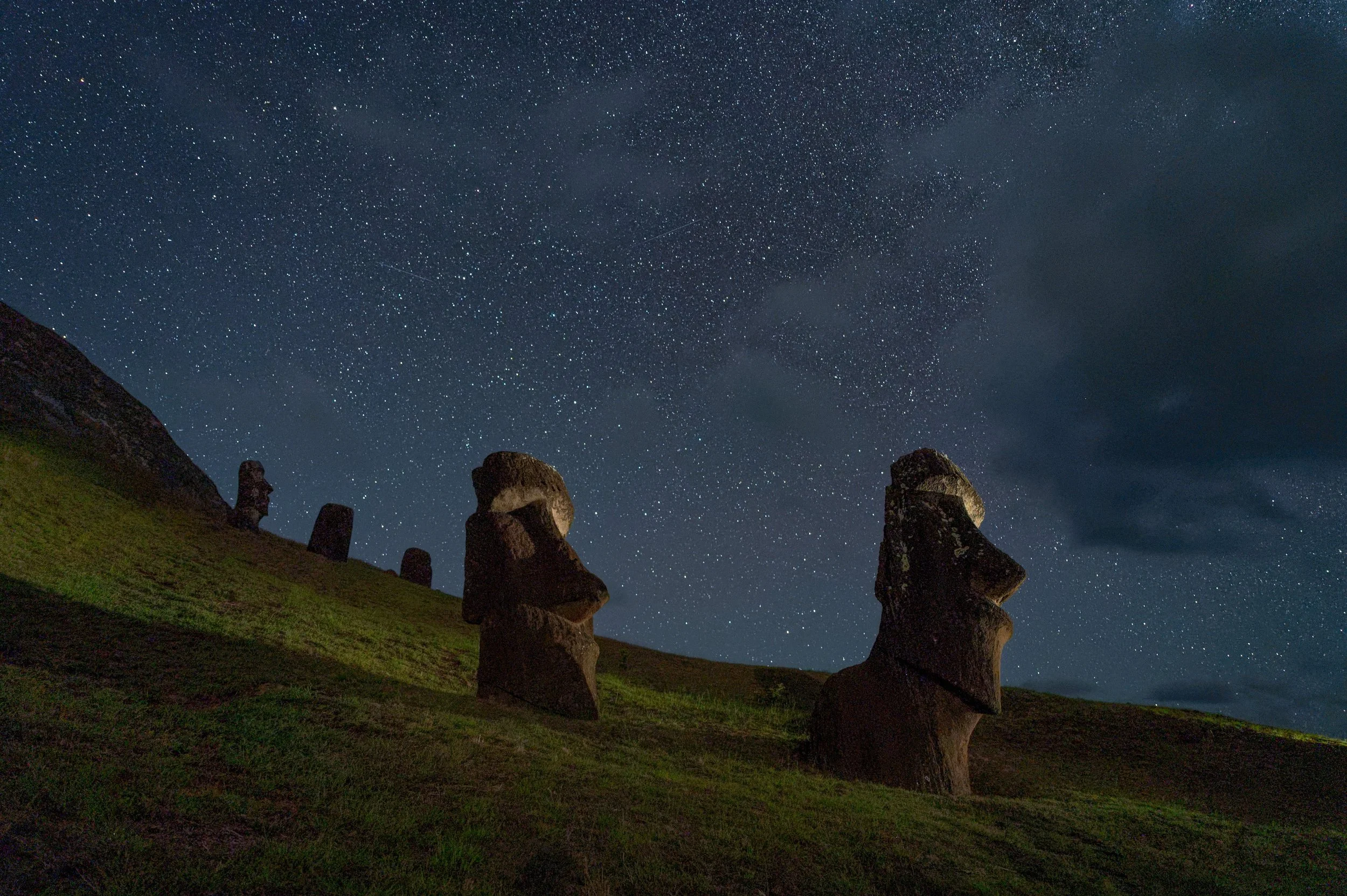If you were to wrap up everything that was 2020 into a single long-exposure frame, I’m confident it would be overexposed. (Too soon?)
But that’s not how we do it around here. We take our time. We are choosy. We are deliberate. We expose for the shadows, yet retain critical details in the highlights. We exercise the right to turn our tripod around 180 degrees and shoot the other way. Why? Because the next best shot is somewhere near the infinite focal point of our lives: night photography.
Now we embark on the hardest quest of the year: to each choose only two frames to represent our favorite creative photographs from of 2020. Please enjoy the highlights from each of our agonizing selection processes. Keep in mind, we (mostly) love all of our photos. But these rose to the top.
Chris Nicholson
Comet Neowise, Monhegan Island
Comet Neowise, Monhegan Island, Maine. Nikon D5 with a Nikon 24-70mm f/2.8 lens. 5 seconds, f/2.8, ISO 25,600; 16 images stacked in Sequator.
One of the nice surprises of 2020 was Comet Neowise. It was a gift to anyone who had been longing to be outside under night skies again, especially photographers. It first appeared at night at the beginning of our July workshop in the Mid-Coast region of Maine, and it really started to shine during our subsequent workshop on Monhegan Island and in Acadia National Park.
It was on Monhegan that I made this image. Lance and I had been shooting on the island for two nights alone, then two nights with the group. On the last of those evenings, in the extra-late hours, I found myself alone on an extra-quiet trail along the rocky shore. I came upon this house and cottage, with the comet nestled quietly in between.
What I didn’t see through the dimly lit window was the perfectly framed head of someone sleeping on a pillow. That detail became apparent only when viewing the long exposure on my laptop display the next morning. Sometimes surprises make the image, and for me that was certainly the case here. Aesthetically I had liked the photograph before, but once I saw the sleeper, I loved it.
The open window and the sleeping would-be stargazer under the comet-adorned night sky all combine to tell the tale of what it felt like to be outside and at peace again.
Moon Over Mobius
Moon over Mobius Arch, Alabama Hills National Scenic Area, California. Nikon D5 with an Irix 11mm f/4 lens, light painted with a Luxli Viola. 20 seconds, f/8, ISO 3200.
In October I was finally able to visit and photograph Alabama Hills—a place I’d seen many photographs of, as Lance, Tim and Gabe have shot there plenty.
Night photographers are of course drawn to rock formations, and Alabama Hills offers a nearly infinite supply of them. Perhaps the most famous, especially for photographers, is Mobius Arch. The day I photographed it was (and still is) the only day I’ve been there, but I was able to shoot it in amazing late-afternoon light, and later in serene moonlight. Yet those two opportunities were hours and hours apart.
I’d spent most of the evening helping workshop participants in other spots, ranging from right next to the cars in the parking lot (where folks were shooting star-panos of the mountain range that flanks the boulder-strewn landscape) to locations far and off the trail (where others were shooting star circles over that same landscape). Only at the end of the night did I return to Mobius, with the last two participants alongside. The three of us worked quietly together, each honed on our own ideas of how to interpret the scene.
I worked on this particular take for about 20 minutes. I already knew the exposure and the light painting approach from previous takes. The trick, though, was following the moon as it set behind Mobius, inching the tripod along the ground, keeping la luna framed right at the edge of the arch from one exposure to the next, until I finally captured what I was hoping for.
Gabriel Biderman
Utakleiv Beach, Lofoten
Utakleiv Beach, Lofoten. Nikon Z 6 with a Nikon Z 14-30mm f/4 lens at 17mm. 8 seconds, f/4, ISO 12,800.
I feel very blessed to have gone to such a special place as Norway prior to the world turning upside down.
Lofoten was an epic experience, but our nights were tricky. Clouds and snow were our constant companions. We kept an eye on the weather and the Kp index to try to predict our best chance at capturing the northern lights.
Finally we saw a good report. The forecast for the elusive aurora opening was going to be from 8 to 9 p.m.—a narrow window before the clouds would roll back in.
We knew the perfect place to go: Uttakleiv Beach. We had spent a day at Uttakleiv earlier in the trip, so we were familiar with the terrain. It has seaside mountains to give scale and water to reflect the night sky.
I’ve never seen a weather forecast be so on point. When we arrived, the overcast skies made the situation seem like a bust. But at 8:00 on the dot, the skies cleared and the magical green lights started their dance. For most of our group, this was the first time witnessing auroras, but to be honest, even for the experienced, this night was pretty special.
For one hour we danced with the northern lights, aiming our cameras as the auroras moved along the purple skies. It was truly magical. And it lasted, as predicted, for one hour. For all of us who shared a night under the northern lights, we’ll carry the experience forever.
Summit Bridge, Red Hook
Summit Bridge, Red Hook. Mamiya 7 with a Mamiya 65mm f/4 lens. 30 seconds, f/8, ISO 100 (Fujifilm Acros II).
Upon returning from Norway, my “adventures” consisted of my apartment in Brooklyn and the surrounding areas. As frustrating as it was not to be under the stars of our national parks, I fell back in love with my “backyard” and film.
I live in Carroll Gardens in Brooklyn. It is a quaint neighborhood where everyone is proud of their front garden. I battled my stir craziness during the pandemic by taking night walks in the neighborhood. I dusted off one of my favorite film cameras—my medium format Mamiya 7—and got back to the basics of shooting film. Brighter urban lights make film exposures fairly easy to determine. 2020 also welcomed the return of Fujifilm’s Acros 100 (now II), which has the least reciprocity of any film on the market and makes long exposure film shots relatively easy.
My walks would often lead me to neighboring Red Hook, which features a mixture of industrial buildings, wharfs, cobblestone streets and old-school residential homes.
Summit Bridge, a small bridge that takes pedestrians up and over the Brooklyn Queens Expressway, unites our two neighborhoods. I’ve walked over it a thousand times, but this time all the elements of the scene clicked for me. I saw lines leading up to the beacon of light. Heck, there were lines galore! The lines of the steps connected with the lines of the rails, which intersected with the lines of the spear-headed fence, and the light reflecting on the brick building also leads the eye to the fence, which all leads back to the focal-point light.
I shot this just two weeks ago. The image is a perfect bookend for a year that started in a distant archipelago and ended very close to home.
Lance Keimig
Portland, Oregon
Portland, Oregon. Nikon D780 with a PC-E Nikkor 28mm f/3.5 lens. 8 seconds, f/8, ISO 100.
Probably like most people, 2020 was not my most productive year, photographically or otherwise. All in all, I count myself lucky though. We managed to hold a few workshops, stay healthy, and fill most of our 2021 workshops and tours. The at-home stress test with my partner Katherine only brought us closer together, despite both of us dealing with ongoing family crises. I’m coming out of this horrible year in better shape than a lot of people, and am grateful for it. Creatively, the year is a write-off, and that’s OK, all things considered.
Katherine and I went to Portland, Oregan, to help celebrate a friend’s birthday in late February, just as the COVID-19 scare was beginning. While there we got together with another old friend who took us out night-shooting in an industrial area that just happened to be near a brewery that Gabe said Katherine and I had to visit. (We did.)
One of the things I came to realize in this truncated year was that I really miss urban night photography. It’s where I started, and I plan to get back to it in a big way when COVID subsides.
This image might not have a lot of appeal to most people, but I love the simplicity of it. The repeating shapes, the backlighting, the shadows, the minimal colors. It’s the kind of image I used to make all of the time, and want to make again. I guess that I also like it because it represents the last moments of freedom before we were all overwhelmed by the pandemic.
Acadia National Park
Eagle Lake panorama, Acadia National Park, Maine. Nikon D750 with a Sigma 24mm f/1.4 Art lens. Five stitched images shot at 15 seconds, f/2, ISO 6400.
Chris and I were joking that I’d be submitting Comet Neowise images as obvious favorites, because that’s pretty much the last time I took a night photograph. I do have a couple of decent comet photos, but it was this pano of Eagle Lake in Acadia National Park (made during the comet’s peak) that I chose to share here. Many of you know that Acadia is one of Chris’ favorite parks, and I was very happy to have been able to spend some time with him there this summer as part of the two back-to-back workshops we somehow managed to pull off in Maine in July.
I’m generally not a landscape photographer, nor a big Milky Way shooter, but this was such a gorgeous scene, and such a peaceful place to be in such a calamitous time, that the memories of being there that this image brings back make it my second pick for my favorite images of the year.
I’m thinking now how snapshots to the non-photographer serve mainly as memory triggers to take one back to a time and place from the past. I guess the same can be true for professional photographers too, as that’s what this image does for me. It’s a bookmark in time, in this case for a brief reprieve from the nonstop barrage of bad news that was 2020. But—this year is coming to an end, and if we are diligent, and a bit lucky, as we round the corner into 2021, things will start to brighten, and new opportunities will await. I’m ready for them.
Matt Hill
Lance on the Racetrack
Lance Keimig on Racetrack Playa, Death Valley National Park. Nikon Z 6 with a Venus Optics Laowa 15mm f/2 FE Zero-D lens. 20 seconds, f/5.6, ISO 1600.
If I could sum up 2020 with one image, it would be this pensive portrait of Lance on Racetrack Playa in Death Valley National Park.
That workshop seemed to be foreshadowing the year ahead of us. We were plagued with adversities. From sand storms to power outages to a scarcity of fresh food, only tenacity on everyone’s part brought us to a successful end. This included our alumni, the workshop leaders and the surprise guests (Gabe and Tim).
My consideration of this image includes the crisp starry sky, the crusty playa and the soft memory of where Lance lingered, considering what occupied his attention at that moment. In the distance you can see other people forming their own relationship with the night sky. Plus, the sign of perhaps other strangers arriving or departing in the car trail on the far side.
2020 will hopefully fade into insubstantiality as this instance of Lance’s pondering did. But hopefully the tenacity and lessons we bring with us will have a more permanent home in our decision-making process.
It’s my wish that we will employ more empathy. Take a little more time to consider the perspective that distance from “normal” offers. And to take the hope one can find in this and apply it to making the things we find important thrive.
Molly Diptych
Diptych of Molly on the Hudson River. Nikon Z 6 with a Venus Optics Laowa 15mm f/2 FE Zero-D lens, lit with a LumoPro LP180 speedlight and a Nanlite Pavotube II 6C. Left: 10 seconds, f/4, ISO 3200; right: 6 seconds, f/3.5, ISO 100.
If you could truly render your perception of another being into a descriptive portrait, how would you approach executing it? I ask myself this before many portrait shoots.
This particular diptych of night portraits was the culmination of something I hold very dear: the opportunity to collaborate with other creative people. Such as the subject of these portraits and the team around this shoot.
Molly, who posed for these, has layers upon layers of truths she finds crucial and things about the world she works tirelessly to improve. From social justice to art, her strength of character and determination were elements I wanted to preserve and to enhance.
Being a fellow artist and photographer, Molly was able to offer contributions that went beyond posing in front of the camera. Her willingness to collaborate, with clear ideas on how she wanted to pose, and her willingness to stand in the murky Hudson River on a warm July night all yielded a rich session with many images I love.
For a few years we were promising to make some art together. And this was really one of the first few chances. I’m happy. And I believe the diptych of Night Paper on the left and a light painting night portrait on the right speak to each other.
The best ideas really require getting other people involved to render the vision. The other people I want to thank are Kelly Mena for producing the video shoot preceding the Night Paper shoot, and my wife Mabel for being my stalwart creative support on the video and portrait shoots. And for that matter, practically everything else.
For me, 2020 will always be a time of exploring the realities and concepts behind isolation, safety and security. This portrait pair is one glimpse into a topic I want to explore even more.
Tim Cooper
Steam at Excelsior Geyser
Steam at Excelsior Geyser, Yellowstone National Park. Nikon Z 6 with a Nikon 14-24mm f/2.8 lens at 20mm. Two blended images shot at 6 seconds, f/2.8, ISO 1600 (foreground) and 15 seconds, f/2.8, ISO 6400 (background).
During our Yellowstone National Park workshop in September, Chris and I brought the group to one of the largest and best-known thermal features in the park: Grand Prismatic Springs. It’s known almost exclusively for the glowing oranges and yellows of the algae and bacteria mats that surround the deeper blues of the spring. But even there, there’s much more than just one shot. And sometimes that other take can be the hero image.
While walking the location, I noticed a car coming down the road backlighting the profuse steam generated by nearby Excelsior Geyser. The play of light and shadow through the steam was simply fantastic. I knew I had to somehow capture it by the end of the night.
By the time the group left, the shot was much more challenging to make. When I exposed for the steam and car lights, the sky rendered pitch black. On the other hand, exposing for the sky overexposed the steam. This situation called for two different exposures at different times.
For the image of the sky, I waited for a break in the steam and exposed to capture Jupiter and the stars. For the next image I had to wait for an oncoming car to backlight the steam—which by that time of night took awhile. After several attempts I finally made the images I would use to create the final composite.
The backlit moving steam and the tree and mountain silhouette came together to create an ethereal image that, for me, perfectly captured the mood of the scene.
Colorado Silky Way
Silky Way over Last Dollar Road, Colorado. Nikon Z 6 with a Nikon 50mm f/1.8 lens. Two blended images shot at 2 minutes, f/2.8, ISO 320 (foreground) and 8 minutes, f/2.8 ISO 160 (background).
The San Juan Mountains of western Colorado is one of my favorite places in the world. I’ve been running workshops there every year since 1995, and I never tire of the area or the scenery. When I am there, I am inspired.
I made this image during our workshop in October, at the end of our traverse over Last Dollar Road, one of the lower mountain passes in the area. Chris and I had chosen this location as a spot where we could photograph both the sunset and, later, the Milky Way. After an awe-inspiring drive, we arrived just in time to time to frame up some shots of the sunset and then plan our blue hour compositions. Once these were made, we left our cameras set up and waited for the end of astronomical twilight. The skies were perfectly clear and every participant made great images of the galactic core.
Upon arrival, I had envisioned my final shot as a tack-sharp image of the core, but after experimenting with shutter speeds, I decided on an 8-minute exposure instead. Eight minutes of exposure is generally too short to create desirable trails when using a wide angle lens, but with the longer focal length of 50mm the trails are perfect. The narrow view of this lens also compressed the foreground and magnified the core to create the look that some call the “Silky Way.”
Your Turn
So there you go—from Maine to California, and even to Norway, and from a plethora of places in between—our favorite photographs from 2020.
Now we’d like to see yours! Please share your favorite night image from the past year, either in the comments below, on our Facebook page, or on Instagram (tag @nationalparksatnight). And then let’s all march forward together into 2021, when we’ll find new nights and new inspiration.

